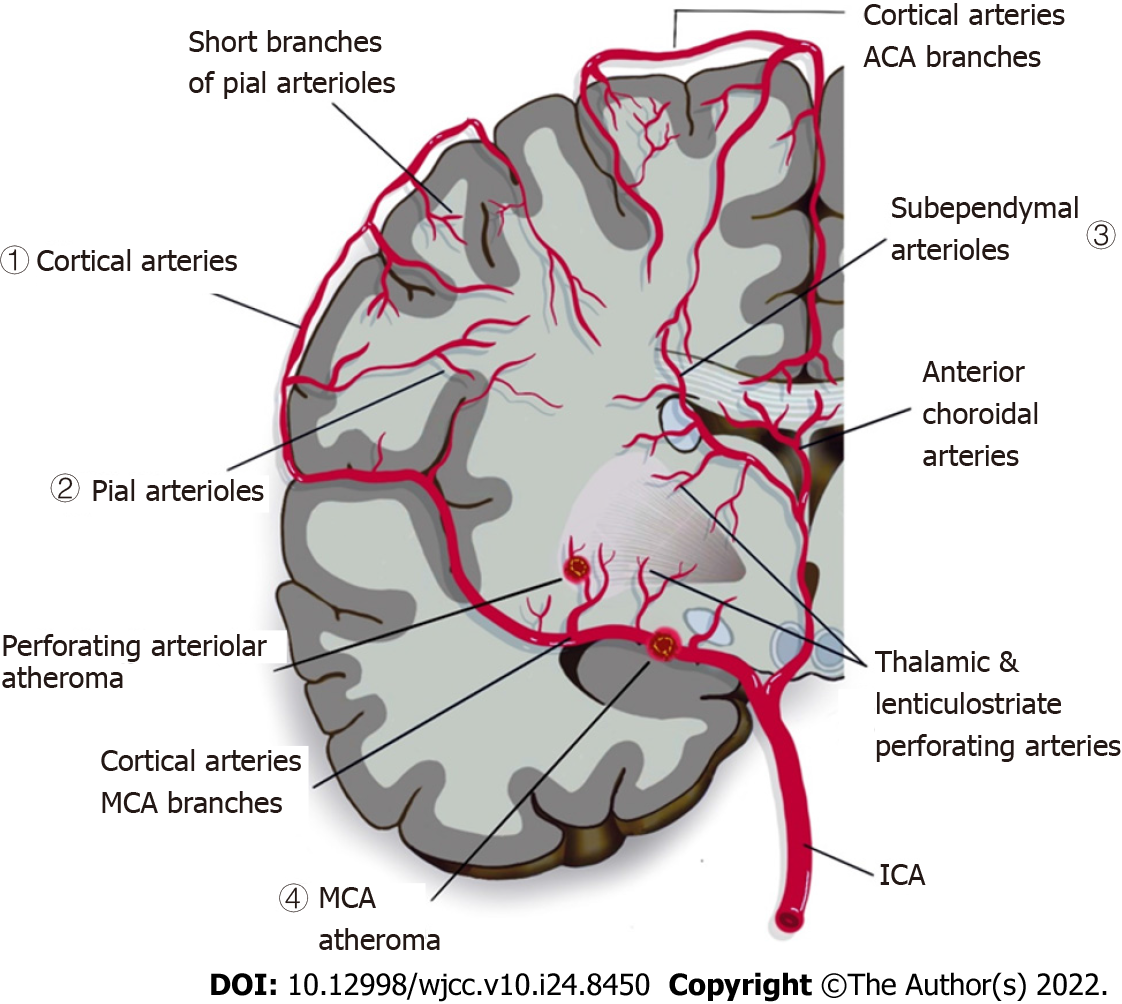Copyright
©The Author(s) 2022.
World J Clin Cases. Aug 26, 2022; 10(24): 8450-8462
Published online Aug 26, 2022. doi: 10.12998/wjcc.v10.i24.8450
Published online Aug 26, 2022. doi: 10.12998/wjcc.v10.i24.8450
Figure 1 Illustration of cerebral vasculature and general pathophysiology of cerebral small vessel disease.
Different branches of cerebral arteries and their territories supplying the cerebral white matter: (1) cortical arteries, (2) pial arterioles that supply deep white matter, (3) short branches of anterior choroidal arteries that branch into sub-ependymal arteries, arterioles of sub-ependymal, and (4) middle cerebral artery (MCA) that branches into thalamic and lenticulostriate perforating arteries. The picture also shows branches of MCA penetrate the subcortical region of white matter and grey matter. In cerebral small vessel disease (CSVD), a thromboembolism in the MCA eventually occludes the lenticulostriate arteries, resulting in a lacunar lesion in basal ganglia. If the atheroma in the parent artery is positioned at the opening of its penetrating branches, it could lead to an acute occlusion of one or several penetrating arteries hence causing a lacunar infarct. A more extensive small vessel disease may lead to a diffused disruption of the blood-brain barrier[3]. ACA: Anterior Cerebral Artery; MCA: Middle Cerebral Artery: ICA: Internal Carotid Artery.
- Citation: Safri AA, Nassir CMNCM, Iman IN, Mohd Taib NH, Achuthan A, Mustapha M. Diffusion tensor imaging pipeline measures of cerebral white matter integrity: An overview of recent advances and prospects. World J Clin Cases 2022; 10(24): 8450-8462
- URL: https://www.wjgnet.com/2307-8960/full/v10/i24/8450.htm
- DOI: https://dx.doi.org/10.12998/wjcc.v10.i24.8450









